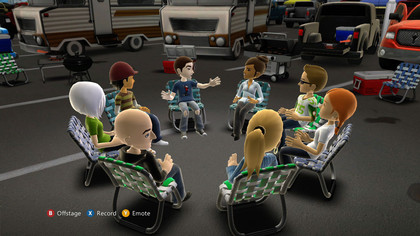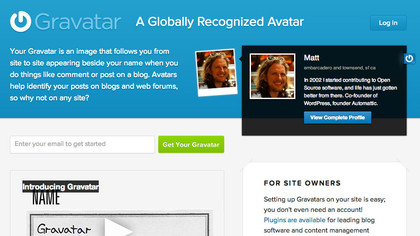How virtual characters are getting smart
Avatars that understand

Online gaming platforms and web forums have used avatars for years, and graphical representations of humans are hardly new, but the wider concept of the avatar is finally waking up.
By morphing into life-size, artificially intelligent and customisable platforms, personal and even corporate avatars could soon replace receptionists, sales clerks and even replicate your colleagues in both real and virtual environments. And the avatar revolution has already started on your smartphone.
Origins of avatars
Forget the James Cameron movie. At its most basic the avatar – a Sanskrit word from Hinduism that means god appearing in living form – is, practically-speaking, just a decorated, personalised caricature that's most often associated with joining some kind of virtual platform.
Doctored head-shots that appear as slightly better-looking animations, creations assembled by choosing noses, eyebrows, eyes and chins from a suite, or just plain stolen images of other people or things are typically how avatars are constructed.
Massive multi-user role-playing games like World of Warcraft use visual representations of users – avatars – and so do social virtual environments like Facebook and Twitter, Second Life, instant messaging and myriad online forums.

It's not much of a leap to a situation where we all roam the internet as one single avatar – something Gravatar is trying to achieve with its portable image – though the idea of having several online identities is something that appeals to many.
This, however, is only half the story, because although avatars to represent us humanoids are set to expand in their use, the world is about to become populated with avatars of computers and machines, too.
Get daily insight, inspiration and deals in your inbox
Sign up for breaking news, reviews, opinion, top tech deals, and more.
Take the idea of the avatar to its logical conclusion and the idea of remote working could be a no-brainer; if you need to meet colleague, just fire-up their avatars and you can suddenly be in a virtual office. But the avatar as a representation of a human has limited use – and it can just as well be applied to a much more useful machine.
Voice recognition software like Siri doesn't have a face yet, just a voice, but work is going on to develop avatar-based apps that deliver personal assistant-style services in a totally customisable way.

The rise of the robots
Take the simply-named Guide, an app for iOS, Android and desktop browsers – currently taking beta registrations – that seeks to feed you the information you already seek, but in a more convenient way.
Based on the premise that almost everything in a local TV news bulletin is completely useless to you, Guide attempts to deliver you only what you're interested in. As in this example on YouTube, Guide puts an lip-syncing avatar of your choosing (even a film star) in front of you as a kind of web concierge, to read out, say, last night's football reports on the BBC news website (or anything with an RSS feed) followed by the status updates of your favourite Facebook contacts.
Chuck in something about your line of work – the latest on world markets if you're in finance, micro-local weather if you're a farmer, etc – along with local traffic news, a couple of celebs' Tweets, and the important emails in your Inbox – and Guide could be something genuinely bite-size and useful. Designed to include multimedia content, too, rather than just text-based news, Guide will be available through web browsers and smartphone apps, though whether it's trying to give you what you need more easily, or simply feeding your pathetic addiction to your 'digital life' is debatable.
Another avatar-based idea is Winston, a live (though US-only) app that's described as a 'a whole new way to interact with your personal web'. Steering clear of the search engine functions of Siri, Winston aggregates your oft-visited sources of news and social media, and presents them via a voice – interestingly, with a British accent. Hands-free apps in connected cars do a similar thing in the name of safety.
Jamie is a freelance tech, travel and space journalist based in the UK. He’s been writing regularly for Techradar since it was launched in 2008 and also writes regularly for Forbes, The Telegraph, the South China Morning Post, Sky & Telescope and the Sky At Night magazine as well as other Future titles T3, Digital Camera World, All About Space and Space.com. He also edits two of his own websites, TravGear.com and WhenIsTheNextEclipse.com that reflect his obsession with travel gear and solar eclipse travel. He is the author of A Stargazing Program For Beginners (Springer, 2015),
